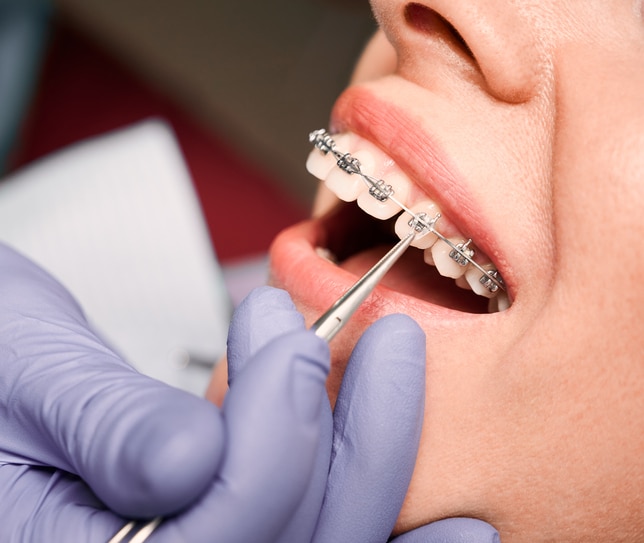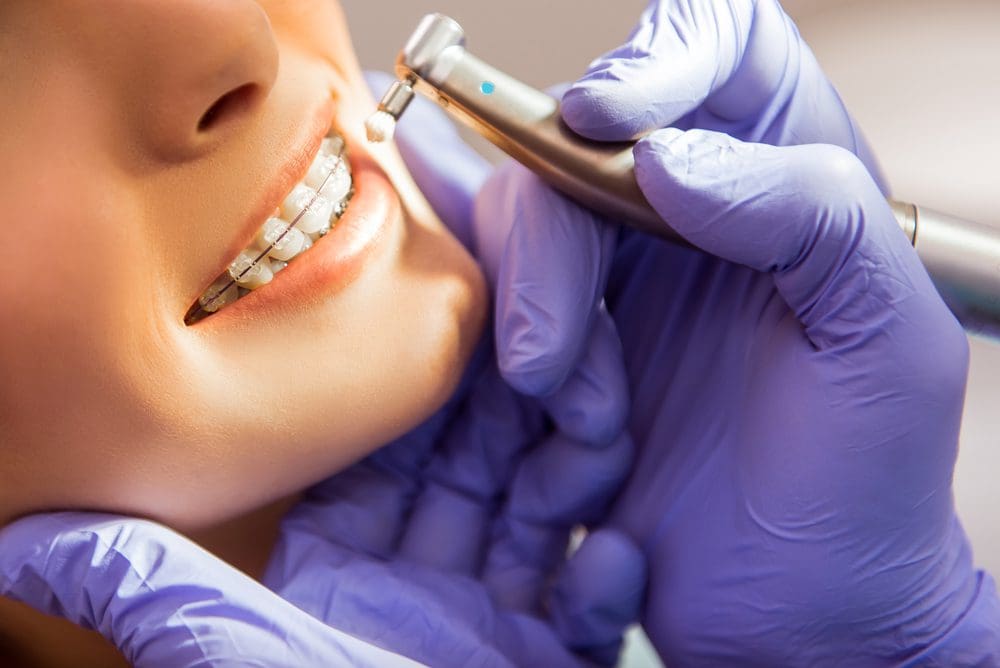Comprehensive Overview to Orthodontics Treatments for Fixing Oral Imbalances
Comprehending the complexities of each procedure, including their systems, benefits, and possible disadvantages, is crucial in making educated choices regarding one's orthodontic treatment. As we navigate via the detailed overview to orthodontic treatments for fixing dental imbalances, the elaborate details of each method will unravel, losing light on the course toward a harmonious and functional dental placement.
Orthodontic Procedures Summary

Regular modifications and monitoring are crucial parts of orthodontic treatment to make certain progress is on track and to make any type of required alterations along the method. By undergoing orthodontic procedures, clients can not just attain a straighter smile however additionally enhance their overall oral wellness and function.
Traditional Braces: Exactly How They Work
When thinking about orthodontic therapies for oral imbalances, traditional braces stick out as a time-tested technique for dealing with teeth placing. Standard braces include braces, cords, and bands that function with each other to use continual stress on the teeth, progressively relocating them into the preferred alignment. The braces are affixed to the teeth making use of an unique adhesive, and the cords are threaded with the braces. By adjusting the tension of the cords, orthodontists can control the instructions and force put on each tooth, directing them right into correct positioning gradually.
As stress is used to the teeth with the dental braces, the bone surrounding the teeth is reshaped to support the brand-new tooth positions. Patients will require routine changes at the orthodontist's office to make sure the braces continue to use the correct pressure for reliable teeth movement.
Unnoticeable Aligners: Disadvantages and pros
Unseen aligners use a discreet and practical alternative to typical dental braces for remedying dental misalignments. These clear, custom-made trays are virtually unnoticeable when put on, making them an enticing alternative for people looking for a much more visually pleasing orthodontic therapy. One of the main advantages of unseen aligners is their removability, enabling easier upkeep of oral hygiene contrasted to standard braces. People can remove the aligners prior to eating or brushing their teeth, decreasing the danger of food getting stuck in the device and streamlining the cleansing process.

Surgical Orthodontic Options
Surgical interventions in orthodontics existing viable choices for addressing intricate dental imbalances that may not be effectively fixed through traditional orthodontic therapies. While undetectable aligners and typical braces can remedy several orthodontic issues, particular situations call for medical intervention to accomplish optimal results. Surgical orthodontic choices are commonly advised for extreme malocclusions, substantial jaw disparities, and cases where the underlying bone framework needs alteration dental health clinic to accomplish proper alignment.
One typical surgical orthodontic treatment is orthognathic surgery, which entails rearranging the jaws to correct useful concerns such as trouble chewing or speaking. This surgical procedure is frequently performed in partnership with an orthodontist that assists line up the teeth prior to and after the treatment. Surgical orthodontics might additionally entail treatments to reveal affected teeth, remove excess periodontal cells, or improve the jawbone to produce an extra unified facial account.
Prior to considering medical orthodontic alternatives, patients undergo a detailed assessment to identify the need and possible advantages of such treatments. cumming invisalign. While surgical procedure might appear challenging, it can significantly boost both the feature and aesthetic appeals of the smile in situations where standard orthodontic therapies drop short
Retainers and Post-Treatment Care

Failing to abide with post-treatment treatment instructions can result in regression, where the teeth slowly relocate back in the direction of their initial placements. Regular retainer wear, good dental hygiene, and routine dental check-ups are important for preserving the results achieved with orthodontic surgery and guaranteeing the long-lasting security of the corrected dental positioning.
Final Thought
To conclude, orthodontic procedures use different alternatives for correcting dental misalignments. Typical dental braces make use of steel braces and wires to change teeth into appropriate placement. Undetectable aligners supply an even more discreet alternative yet may not be appropriate for all cases. Surgical orthodontic choices are offered for more extreme imbalances. Retainers are commonly made use of post-treatment to preserve the useful content new positioning. On the whole, orthodontic treatments can successfully boost dental health and visual appearance.
As we browse with the extensive guide to orthodontic treatments for correcting dental imbalances, the complex details of each method will certainly unfold, losing light on the path towards a harmonious and practical oral placement. - cumming orthodontist
One of the most typical orthodontic treatments is the usage of dental braces, which consist of metal brackets and cords that apply mild pressure to slowly change teeth right into the desired position.When taking into consideration orthodontic therapies for oral imbalances, typical dental braces stand out as a reliable technique for dealing with teeth positioning. Furthermore, undetectable aligners might not be ideal for complex orthodontic issues that require more considerable teeth activity, as they are generally suggested for mild to moderate instances. Retainers are custom-made orthodontic gadgets made to hold teeth in their fixed positions after the completion of orthodontic therapy.